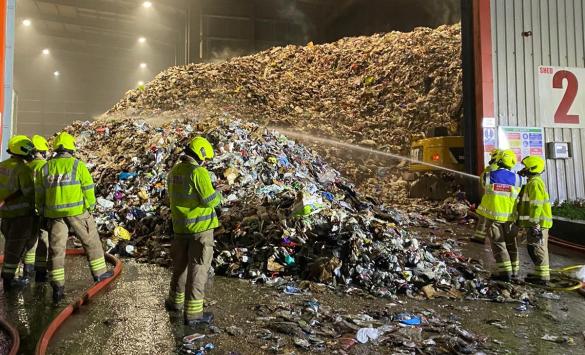Speaking at the IWM’s annual presidential dinner in London last night, Mr Hewitt
emphasised that big challenges lay in several areas, including recycling and attracting
investment into the waste industry.
He said that the government had set some very challenging targets for local
authority recycling and he cast some doubt on whether councils had really achieved an
overall recycling rate of 9% as calculated by the government.
“The government has set a target of 25% recycling by the year 2005 and the
achievement of that will have a pretty critical knock on efect on future years.”
Achieving the aims of the waste strategy and meeting the requirements of the Landfill
Directive “will cost a great deal more than 1 billion which will have to be spent by 2013 for
2020 targets to be achieved.”
Mr Hewitt said that he was worried that the investment would not be forthcoming
from the city, referring to is as “hard bitten investors” who will not see the waste sector as
attractive.
Part of this he put down to the fact that waste companies had low rates of return
and were embroiled too intensely in bidding prices down. “If all the companies area all so
prepared to fight each other over volume and prices – that can only create horror to their
board and investors.”
Mr Hewitt added that further consolidation in the industry was unsustainable
unless a greater volume of return could be achieved.
Mr Hewitt also went into detail on what he thought some of the implications of the
directive would be.
“The directive itself will have a significant effect by banning co-disposal of liquids,
ultimately disposal of all tyres and various hazardous wastes. There will also be
re-classification of landfills and the diversion of biodegradable waste away from landfill.
“All of these are important issues. The final two, however, are probably the most
significant. The re-designation of some landfills as hazardous waste sites will accentuate the
difficulties in obtaining planning consents. The feeling is that there will be very few
hazardous sites in 10 years’ time. Biodegradable waste diversion from landfill will result in an
increase in other treatments, such as composting and anaerobic digestion, but the reduction
of these wastes and liquids into landfill will undermine the bioreactor concept for landfill.”
Mr Hewitt continued: “There will be a compensatory effect in other industry sectors
in that the increased volumes of various hazardous wastes will require to be processed by
merchant treatment plants and high-temperature incinerators. There is insufficient capacity
nationally to deal with hazardous waste diverted from landfill. That capacity is unlikely to be
available by 2004 and the Environment Agency predicts that this will result in an escalation
of environmental crime.”











Subscribe for free